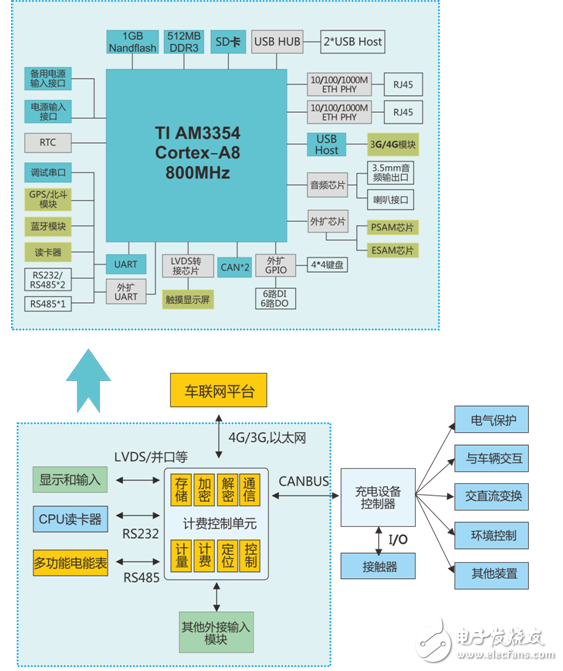Program background: As China's economic and social development level continues to increase, car ownership continues to climb. Vigorously developing electric vehicles can speed up fuel substitution and reduce vehicle exhaust emissions, which is of great significance for ensuring energy security, promoting energy conservation and emission reduction, preventing and controlling air pollution, and promoting China's transition from a big automobile country to a car power. According to the "Guidelines for the Development of Electric Vehicle Charging Infrastructure (2015-2020)" issued by the National Development and Reform Commission and other four departments on November 17, 2015, by 2020, more than 12,000 centralized charging and replacement stations will be added. More than 4.8 million decentralized charging piles are available to meet the charging requirements of 5 million electric vehicles nationwide. The charging infrastructure mainly includes various types of centralized charging and replacing power stations and decentralized charging piles. The perfect charging infrastructure system is an important guarantee for the popularization of electric vehicles. Further vigorously promoting the construction of charging infrastructure is an urgent task to accelerate the promotion and application of electric vehicles, and is also an important strategic measure to promote the energy consumption revolution. Program overview: As an important partner of TI in China, Mill Technology has responded to market demand with many years of technology accumulation in TI Sitara series processor solutions and industrial control applications. In 2015, it cooperated with TI to calculate the charging grid for the national grid. The technical parameters of the fee control unit require the development of a motherboard that fully satisfies the national network standard, which is convenient for customers to directly embed into the charging pile. The overall block diagram of the program is as follows: Motherboard specifications and implementation features: l Processor: TI AM3354 Sitara ARM Cortex-A8, clocked at 800MHz l Memory: 512MB DDR3 l FLASH: 1GB Nandflash l External storage: standard SD card l RS485 interface: used for external multi-function electric energy meter to realize measurement l RS232 interface: for external card reader l Two Ethernet ports: used to connect to the upper system l 2 CAN interfaces: communication with charging controller CAN bus and electric vehicle BMS system l 1 USB Host interface: for external USB flash drive l External ESAM/PSAM chip: implements billing unit encryption l External GPS or Beidou module: to achieve charging pile positioning l External 3G/4G communication module l LCD interface: with 4-wire resistive touch signal, can be connected to LVDS LCD screen l 1 3.5mm audio output port, 1 speaker interface for voice prompt l 6 way DI, 6 way DO l RTC clock: with battery charging function, the clock can be kept for more than 1 year after the system is powered off l Adopt Linux 3.14 kernel version: Run QT interface, can directly run the application software of the national network The physical interface diagram of the motherboard is as follows: cooperation method: In addition, Mill Technology has developed three ways of cooperation in response to the requirements of the national standard: 1. The customer directly adopts the motherboard MYD-C3354-V2 which fully complies with the national standard. 2. Based on the above core board MYC-C3354-V2, customers can customize their own baseboard according to their own needs. 3. Our company customizes the single board service according to customer needs. Waveguide Adaptor,Coaxial To Waveguide Adapter,Waveguide To Coaxial Adapter,Waveguide To Coaxial Transition Chengdu Zysen Technology Co., Ltd. , https://www.zysenmw.com


March 03, 2021